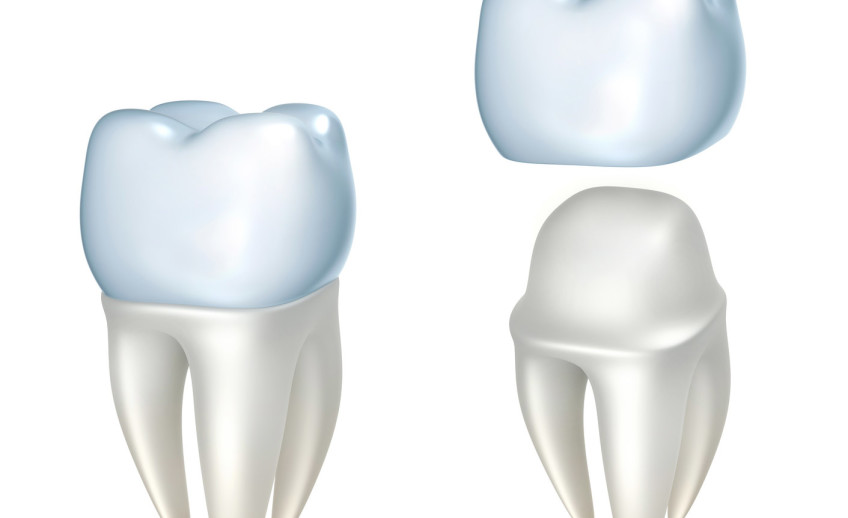Dental Crowns are prosthetic teeth that look and function just like natural teeth to restore any damaged tooth. There are several different kinds of crowns. The two primary ones are all porcelain crowns which achieve a high aesthetic result and porcelain fused to metal crowns which look like natural teeth but have a bit more strength.
The Crowning Process:
Step 1: Tooth Preparation: Regardless of the case (root canal treated, fractured, stained, indicated for bridgework and so forth), the treatment procedure begins with tooth preparation. During this phase, surface reduction is worked all over the tooth, taking into consideration path of insertion, clearance from the opposing teeth, shoulder bevelling in relation to gum tissue and alignment with the adjacent teeth. A properly constructed crown should provide an aesthetic reconstruction, so the preparation can very well break or make the procedure.
Step 2: Tooth Impression: As soon as appropriate reduction has been completed, the patient is readied for dental impression. To properly access the whole preparation, up to the level of the gum tissue, tissue separation should be carried out. Once ready, an upper and lower impression will be taken so that a mould can be constructed from it. This dental cast or mould will be utilized in the laboratory to fabricate the crowns.
Step 3: Shade Selection and Bite Registration: Two very crucial information needs to be determined before the patient is released. First, a bite is taken so that the upper and lower casts can be mounted in the cast in its proper occlusion. Second, proper shade is determined with the use of an acceptable porcelain shade guide. This is best taken under natural light, without the influence of other light sources. These recorded information is included with your job order form sent to the laboratory.
Step 4: Temporary Crowning: During the process of crown fabrication, the patient will be fitted with temporary “plastic” crowns, so that the function of the tooth or teeth is not lost during that time.
Step 5: Trial Fitting: Depending on the fabrication process involved and the materials used, there will be a few appointments in between tooth preparation and final cementation, where the patient will be coming into the clinic to try out the new crowns. These appointments are relatively short, the temporary crowns are removed and the fabricated crowns are fitted, so that adjustments can be made. After which, the temporary crowns are recemented on the tooth or teeth and the patient is released.
Step 6: Crown Cementation: Once everything is perfect: the fit, the shade and the occlusion, the patient is scheduled for the final cementation of the crown. A permanent cement is used, to provide proper retention for the crowns and the patient is released with instructions for home care.

